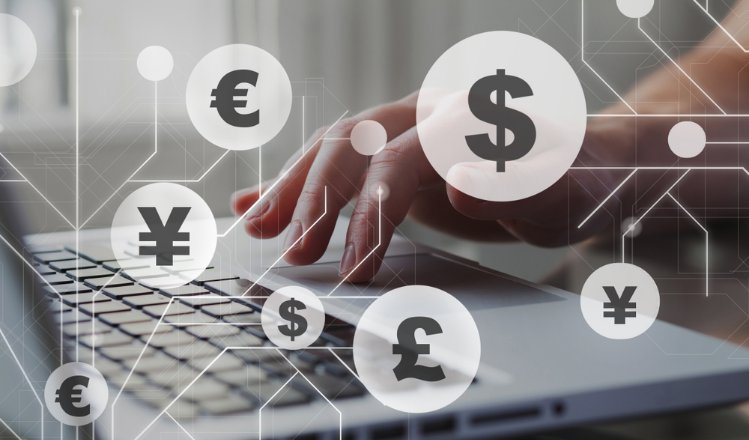One of the primary reasons millions of Americans have turned to a Self-Directed IRA as the investment vehicle of choice for their retirement funds is the ability to have greater investment control. Gaining the ability to invest IRA funds into assets outside of equities is viewed as a great way to diversify one’s retirement savings as well as a hedge against rising prices and inflation. Forex, or foreign currency trading, is an alternative investment option that several Self-Directed IRA investors have explored.
- Investing in foreign currency has become popular among retirement savers
- Using a Self-Directed IRA LLC is the best way to invest in Forex
- Know the risks before you start investing
What is Forex?
Forex, also known as foreign exchange or FX trading, is the conversion of one currency into another. It is one of the most actively traded markets in the world, with an average daily trading volume of $5 trillion.
Forex is traded 24 hours a day, 5 days a week by banks, financial institutions, and individual traders worldwide. Unlike other financial markets, there is no centralized marketplace for Forex; currencies trade over the counter in whatever market is open at that time.
Trading Forex involves the buying of one currency and the simultaneous selling of another. In Forex, traders attempt to profit by buying and selling currencies by actively speculating on the direction currencies are likely to take in the future. For example, a Self-Directed IRA trader may buy Euros and sell U.S. dollars or may buy Canadian dollars and sell British pounds. Forex investing is somewhat risky because of the 24-hour-a-day, 5-day-a-week marketplace.
What is a Self-Directed IRA?
A Self-Directed IRA is not a term you will discover in the Internal Revenue Code. In essence, it is an IRA account in which the IRA custodian allows the IRA to be invested in alternative assets, such as real estate or Forex. A Self-Directed IRA follows the same tax rules as a traditional IRA. The sole distinction is that a Self-Directed IRA can invest in alternative assets.
Benefits of Forex Trading in a Self-Directed IRA
Diversification: Investing in foreign currencies can provide a unique opportunity. Unlike other investments, such as stocks and bonds, forex trading in an IRA can help diversify your retirement and better prepare you for a market downturn.
Ease of Trading: Since Forex trading is international, you can trade Forex in your IRA 24 hours a day, five days per week.
Transaction Costs: Forex trading tends to have lower transaction costs. However, these costs may vary based on the chosen provider.
Profits: An individual who understands Forex trading will know that there are potential profits that flow back to your IRA when the international markets fluctuate.
Taxes: With a Self-Directed IRA you can avoid paying taxes on your gains. Since all trading is done within your IRA, your profits flow back to the IRA tax-free!
Self-Directed IRA Forex Options
There are two ways to use a Self-Directed IRA to invest in Forex.
The Self-Directed IRA
A Self-Directed IRA offers an IRA investor more investment options than stocks sold at a traditional financial institution. With a Self-Directed IRA, a special IRA custodian, such as IRA Financial, will serve as the custodian of the IRA.
Unlike a typical financial institution, most IRA custodians generate fees simply by opening and maintaining IRA accounts and do not offer any investment products or platforms. In the case of a Self-Directed IRA, the funds are generally held with the IRA custodian, and at the IRA holder’s sole direction, the IRA custodian will then invest those funds into alternative asset investments, such as foreign currency.
Self-Directed IRA LLC
The Self-Directed IRA LLC with “checkbook control” has quickly become the most popular vehicle for investors looking to make alternative assets investments where the IRA owner is seeking a high degree of control.
Under the Checkbook IRA LLC set-up, a limited liability company (“LLC”) is established, which is funded and owned by the IRA, and managed by the IRA owner. The Checkbook IRA LLC structure allows the investor to act quickly when the right investment opportunity presents itself cost-effectively and without delay.
The Checkbook IRA LLC also offers a greater degree of privacy than the standard Self-Directed IRA since the IRA investment is made in the name of the LLC versus in the name of the IRA. In addition, using an LLC owned by the IRA provides limited liability protection to the IRA owner on all IRA assets owned outside of the LLC.
Most foreign currency exchange institutions will not allow an IRA to be the owner of the account directly. Hence, the use of a Self-Directed IRA LLC is typically the most common vehicle used to invest in foreign currency.

Tips to Use a Self-Directed IRA to Invest in Forex
- Do your research on the Forex company you will be using
- Understand that the Forex market is 24 hours and 5 days a week
- Forex investing can be highly profitable but also extremely volatile and risky
- You will likely need to establish a Self-Directed IRA LLC to invest in foreign currency
- All gains from the Forex investments will go back to the IRA without tax
- If you use margin to buy foreign currency, the loan cannot be personally guaranteed by the IRA owner. In addition, the use of margin could trigger the UBTI tax.
Conclusion
Using a Self-Directed IRA to invest in foreign currency investments could help better diversify your IRA savings, as well as allow you to generate tax-deferred (or tax-free with a Roth IRA) gains. Forex investments are risky and volatile, and one should do his or her research before investing retirement funds in foreign currency.











